Chandy Digital Quilting Design on a Ruby Star Society Spring Sew Along Swatch Quilt


First thing's first. It's pronounced shandy.
I didn't want to spell it with an "s" because I think the descending circles give off big chandelier energy and wanted to maintain that attribute as part of the name. Also, I believe there are other chandelier named pantographs, so Chandy seemed like a fun way to distinguish this one.
As far as other design attributes, this pattern features repeated lines at opposing angles and at different intervals that provide interesting texture. Throw in some circles, and you get a dynamic result!

The interplay of the rows is central to the design, so make sure to read the technical details before using this digital pantograph.
True story: I stitched probably a good 20" of another design (that I'll release soon) on this quilt before I decided it was all wrong and unpicked everything. It actually could have been cute at a smaller scale, but against the simple shapes of the patchwork, I felt the quilting needed a bit more oomph. That's wh...
White Space Digital E2E Quilting Design
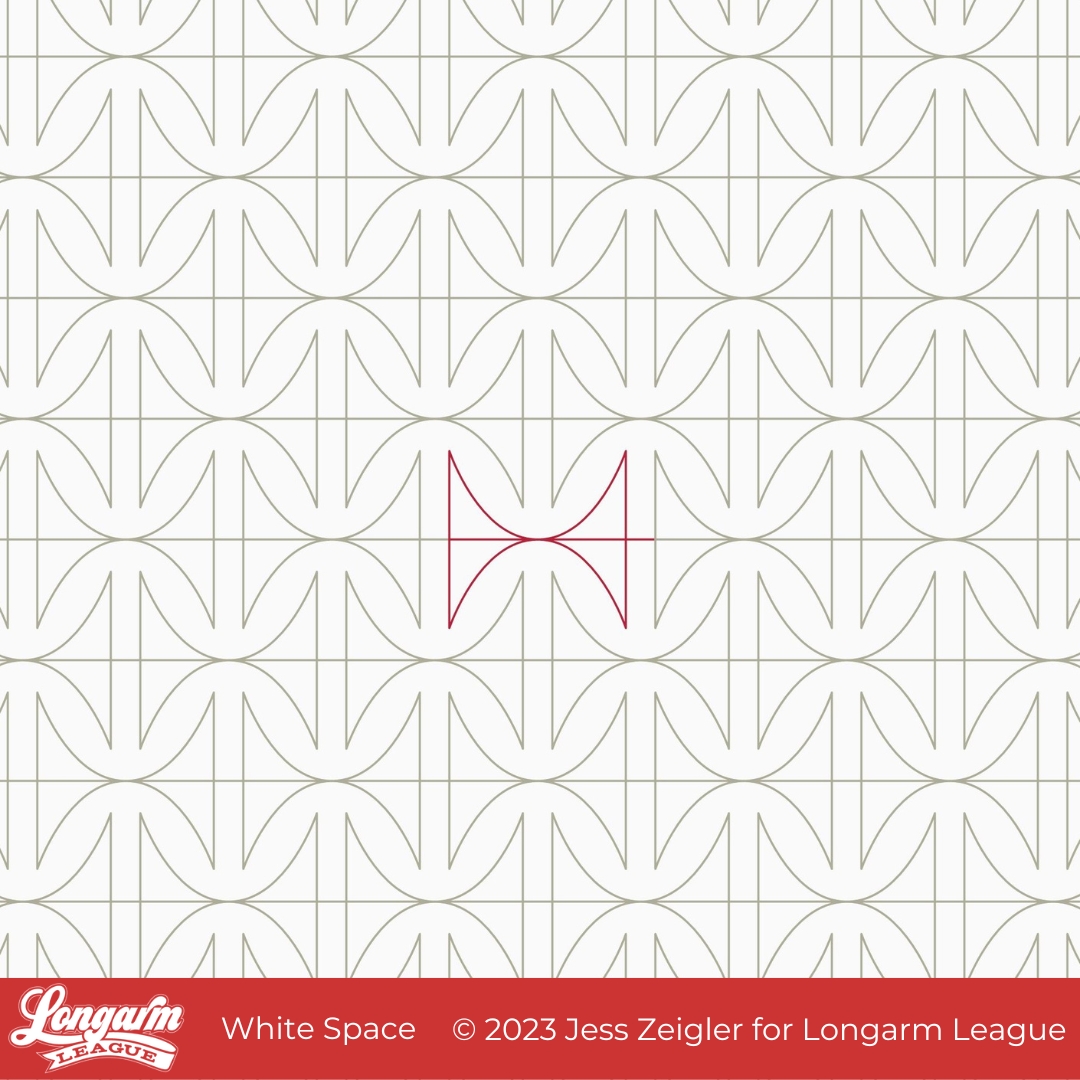
This design is all about the negative space—also known as white space—around the lines. I love how the curvy parts of the design are reminiscent of cathedral window blocks and how the straight lines create channels that provide some contrast to the curvy.

If I didn't design this and wasn't sure where the repeats were, it looks like it could be difficult to line up from row to row. That is definitely not the case! This design is very simple to stitch out. Every other row does need to be offset by 50%, but there is no exact matching necessary anywhere. 

If you stitched this design out on a quilt loaded on its side, you'd see results that play up hourglass or spool shapes. I also see asterisks and orange peel variations if I look at the pattern long enough! :) 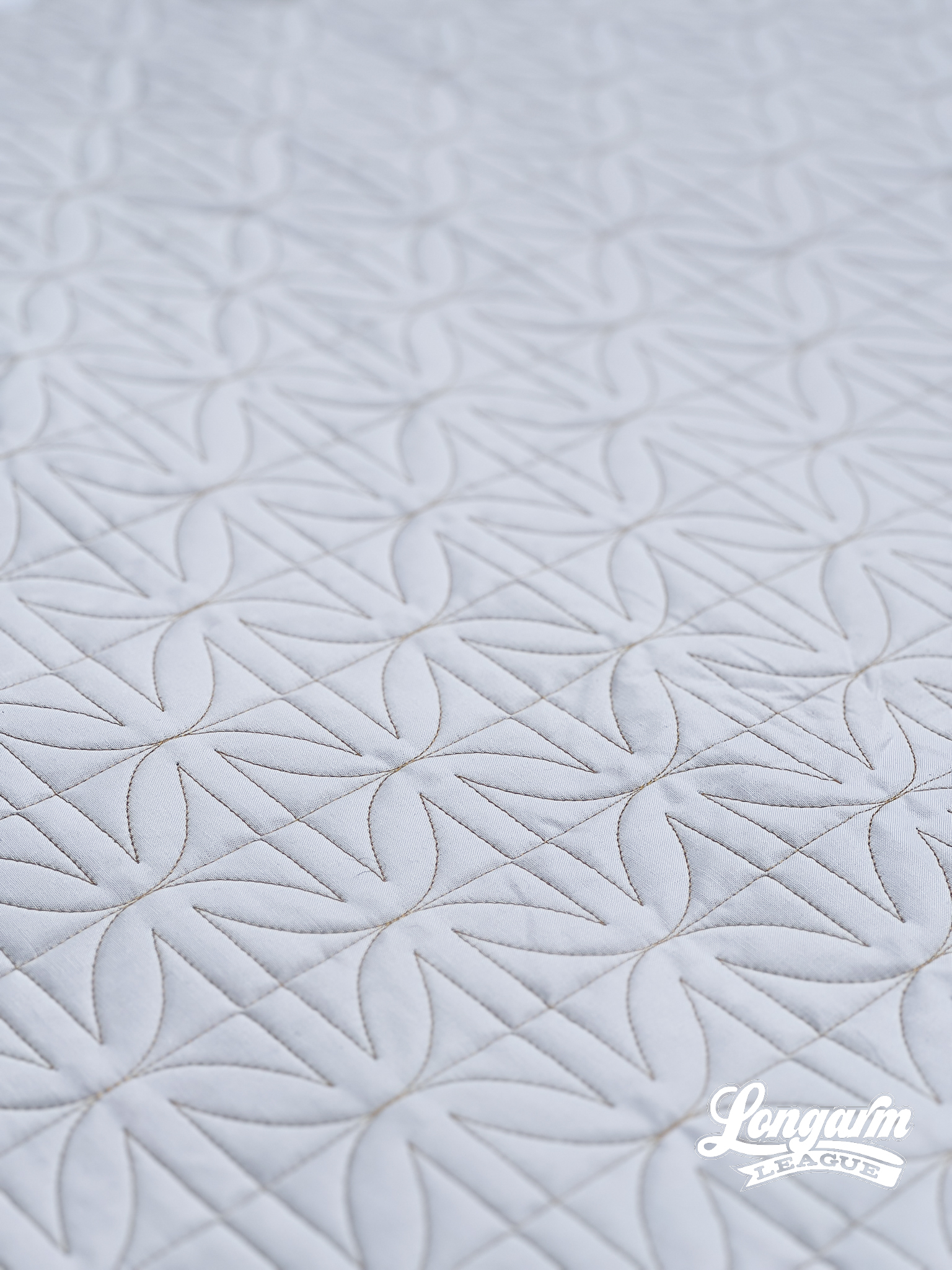
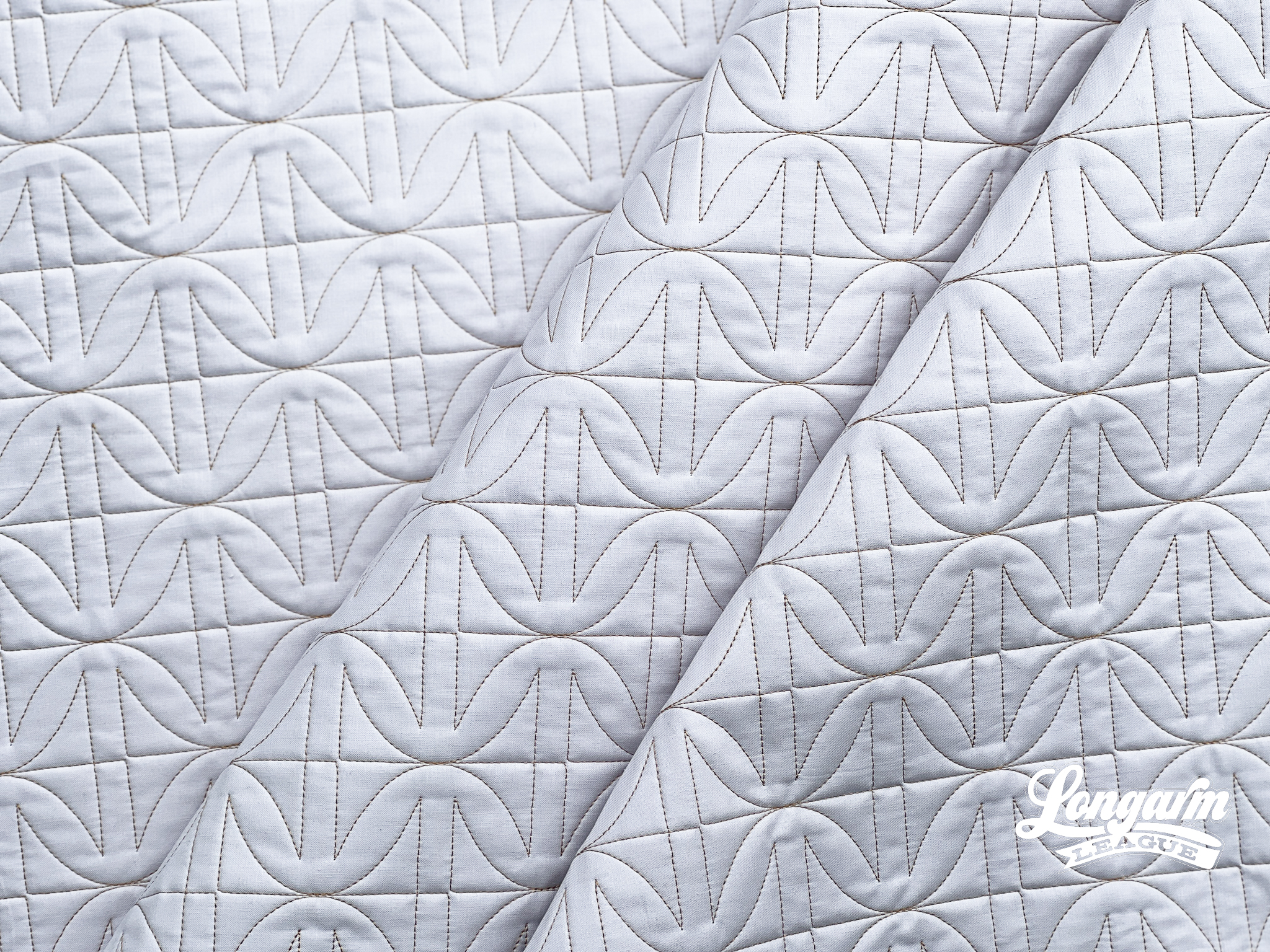

The Technical Details
A video of the stitch path appears at the top of this post. Again, it's a pretty straightforward and simple design with a fluid sequence. On the included PDF, I did indicate "minimal" over...
Wishbone Edge-to-Edge Digital Pantograph

Wishbone History
Do you know how long I've been meaning to write a blog post about Wishbone? Well, I started this draft in August of 2020. The design was a few years old by that point.
Wishbone is the first design I ever released to the public in September 2019, mere weeks after the Longarm League membership started for the first time. I designed it the prior year due to the frustration of not being able to find a design simply referred to as 'Loops' by some Statler Stitcher owners I followed on Instagram.
I spent hours combing the Internet with the intent to buy the looped design, but resorted to making a version of my own when I couldn't locate it. This gave me a chance to use my Intelliquilter's editing tools to create the must-have elements that I wanted: 60º angled lines and meaty "teardrop" shapes that would nest with the rows above and below.
The resulting design lived on my tablet for a long while until I bought Art and Stitch software and was able to export it, s...
Always Digital Quilting E2E Design

Always is a new digital pantograph design that is a breeze to stitch out. The curvy contours of this shape work so well in providing a pleasant contrast with the straight lines and angles of most patchwork.
There's a retro feel to this design, too, but will fit the "mood" of many contemporary or modern quilts.
The Name
You might know from reading my previous blog posts that I often use a working title for designs before they get released and need a "real" name. Well, the working title for this one was Lightdays because of the shape resembling a pad. And well, growing up I could count on that particular brand being tucked away in the bathroom cupboards, so that's what my mind went to. My sister thought this was hysterical when I texted her the design with the name, and that's all that really matters. 😂
But obviously I couldn't actually use Lightdays as a name. I didn't want it to be THAT obvious or cause anyone to avoid using the pantograph because of the name. I asked my fr...
Sketch Digital Pantograph Quilting Design
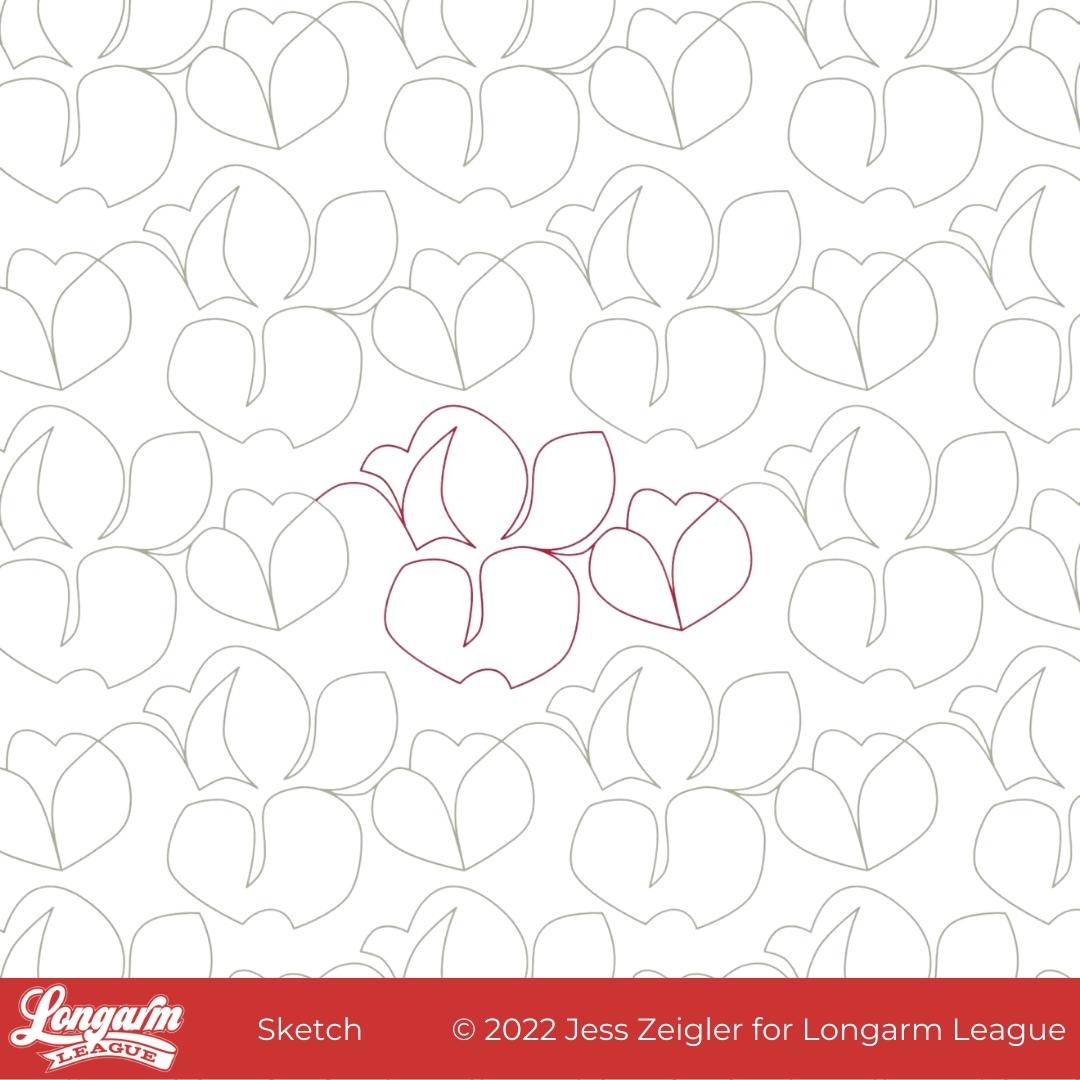
This is Sketch! Up until very recently, I'd planned to name it Cottonwood but when I discovered that's already another designer's pantograph name (with a related hashtag). I decided to go off-script and name it something unique.
The only trouble with having a really abstract design that could look like one hundred things and also nothing? Naming was hard. Why does it seem that I either have great name right away or I'm stress-listing stream of consciousness options and calling on friends and family for help? There's no in-between!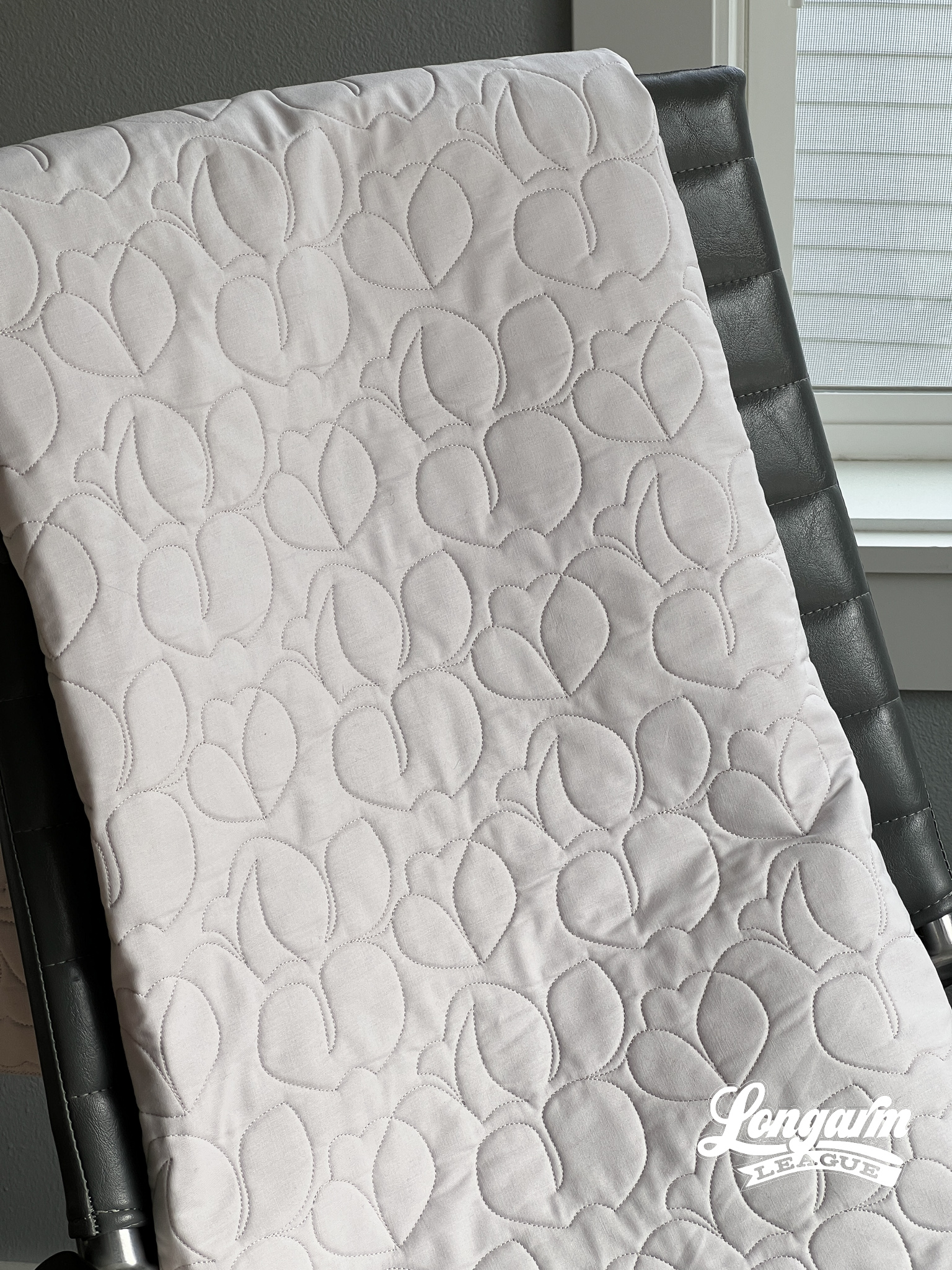
What I like about this design is that it's much more abstract and off-kilter than designs I normally create. There's a fun energy to this design—a bit folksy and quirky. I'm ordinarily not one to use negative space when it comes to pantograph designs, but I have to say that I like the organic-looking spacing of the motifs between the rows with this design. It looks more free-flowin', like a sketch!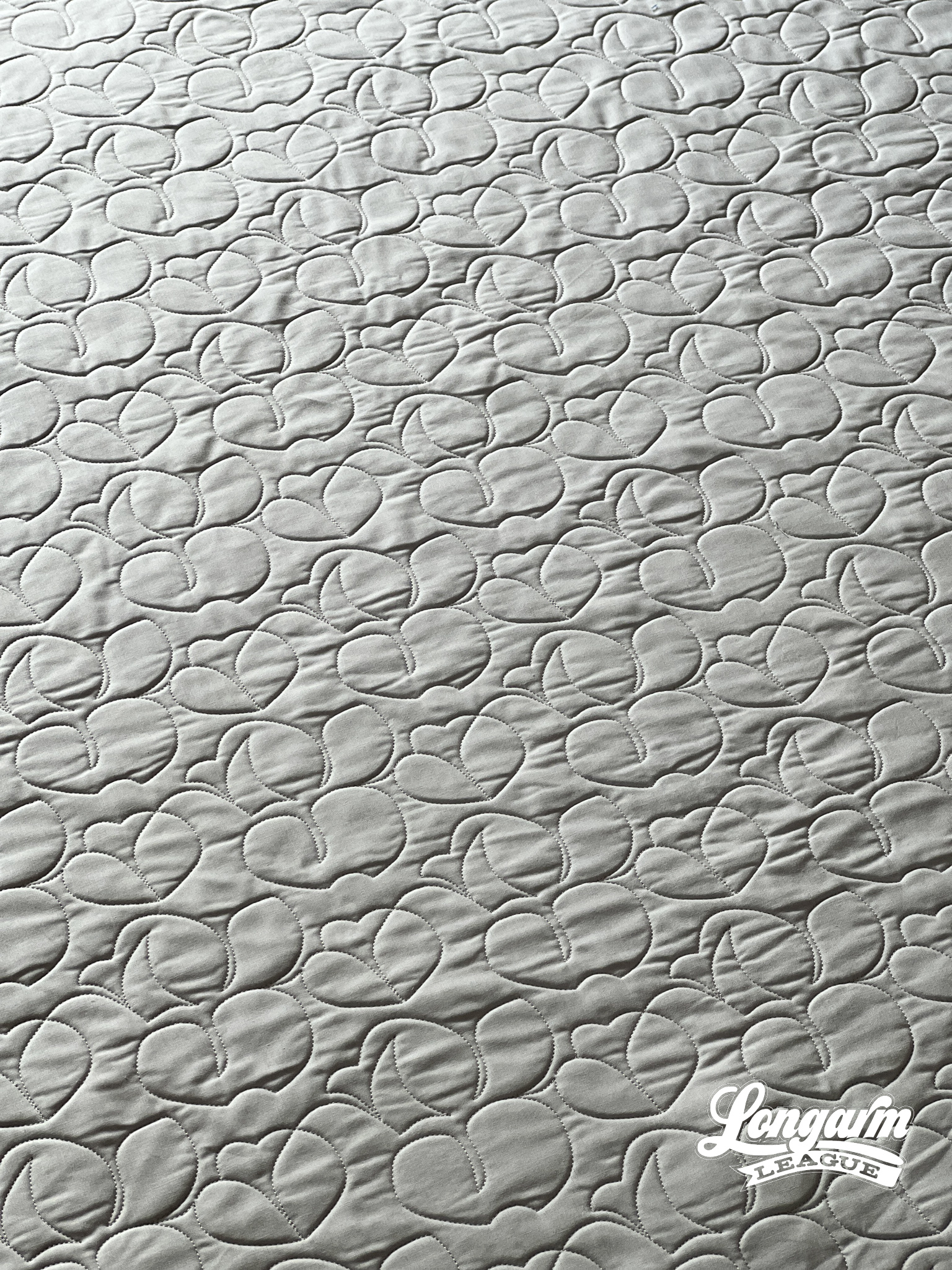
I also like that the overall texture reads as ro...
Volunteer E2E Quilting Design

Volunteer is a simple, uncomplicated edge-to-edge quilting design meant to create an interesting and bold texture.

In fact, 'Bold' was the working title of this design as I was saving and re-saving different options along the way. I also briefly considered naming it Lots of Love, but thought that might be too confusing. It looks a bit like LOL, and in the early days of the Internet, people on message boards couldn't decide if LOL stood for Laugh Out Loud or Lots Of Love. 
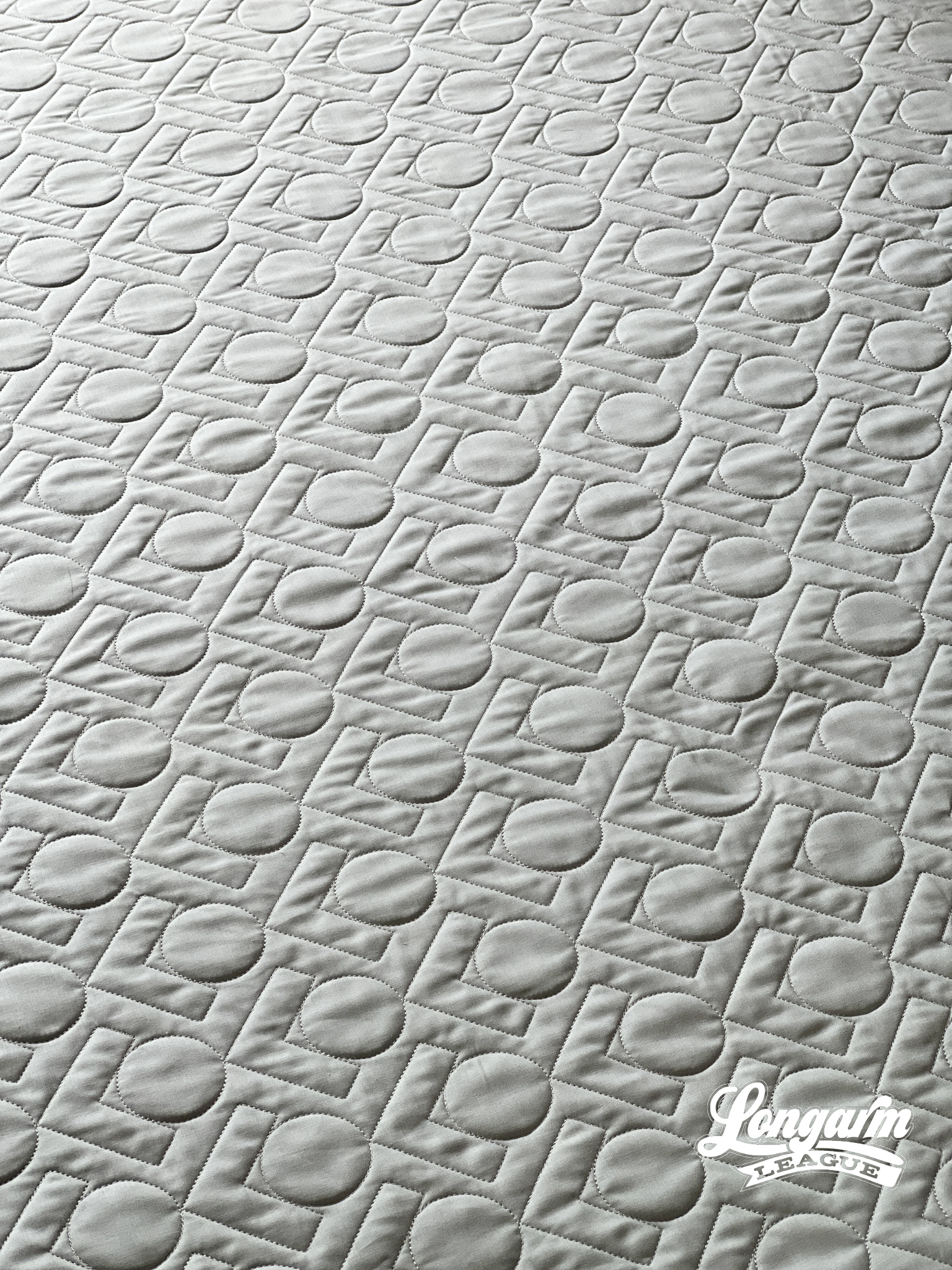
In the end, I thought Volunteer works as a name because it looks like a person raising their hand. And I like one word names that haven't already been used for other E2E designs.
I think this quilting design would be great for modern-looking, geometric or graphically bold quilt patterns or fabrics. Or perhaps a child's quilt!


Here are the specifications for how I set up this design using my Intelliquilter on a baby-sized quilt sample (40" x 50" quilt size):
Row height: 2.797"
Gap: -0.743"
Pattern ...
Diamond Loops Digital E2E Design on a Scrappy Squares Quilt
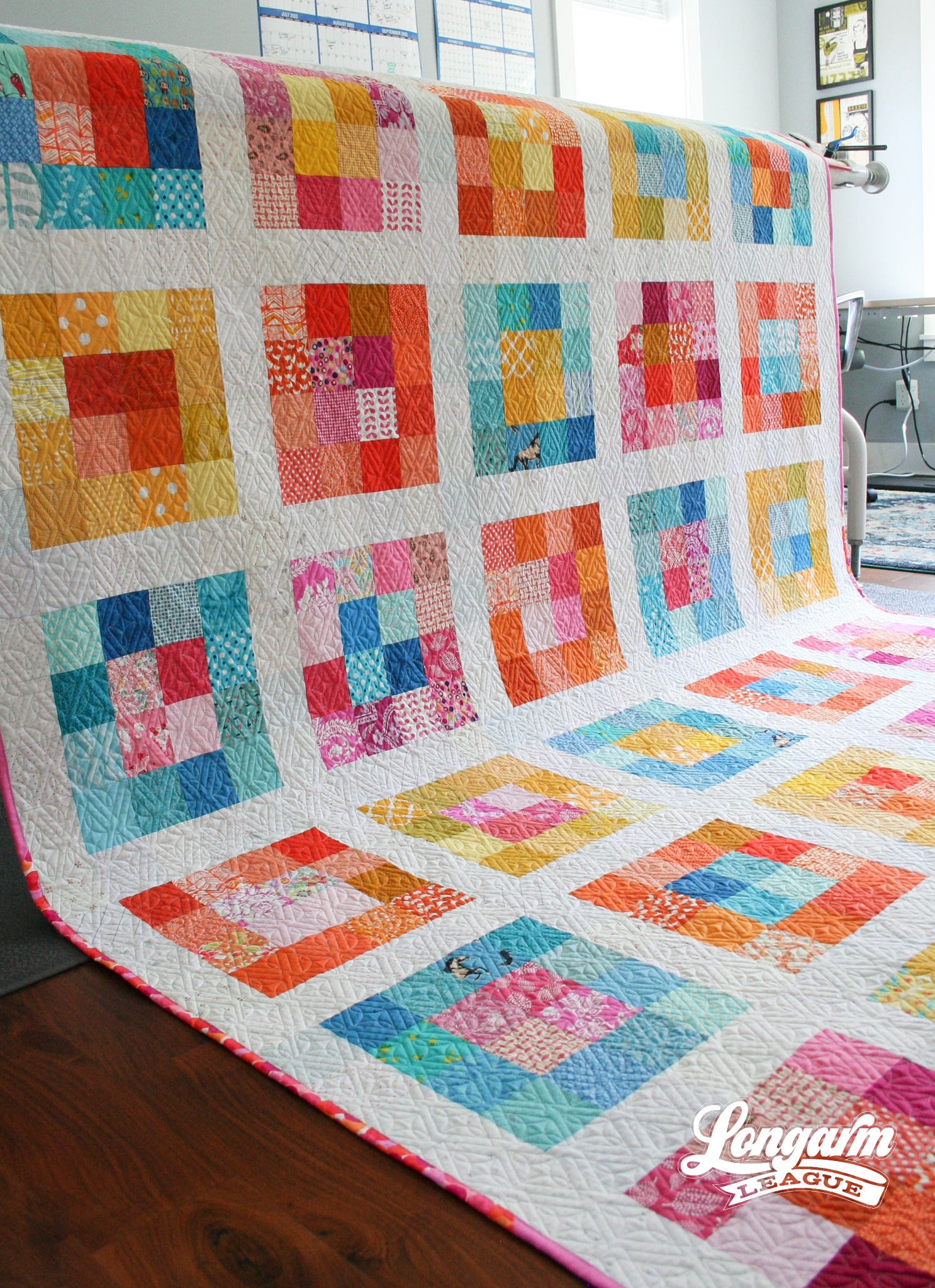
Now that my day job is supporting the Longarm League membership and teaching new longarm quilters how to start a business, I need to be extremely intentional about setting time aside to feed my own creativity or it does not happen.
After a 4-year hiatus, my passion for piecing was reignited this year after being invited to a retreat at Stitch Supply Co. in Altoona, Wisconsin. It was glorious! The desire to plan, cut, and sew a quilt top has stuck with me since retreat. I'm drawing the distinction here between piecing and quilting because I frequently quilt samples of new digital edge-to-edge designs, but that isn't the same feeling as creating patchwork.
It's safe to say, patchwork and I are back "on" again.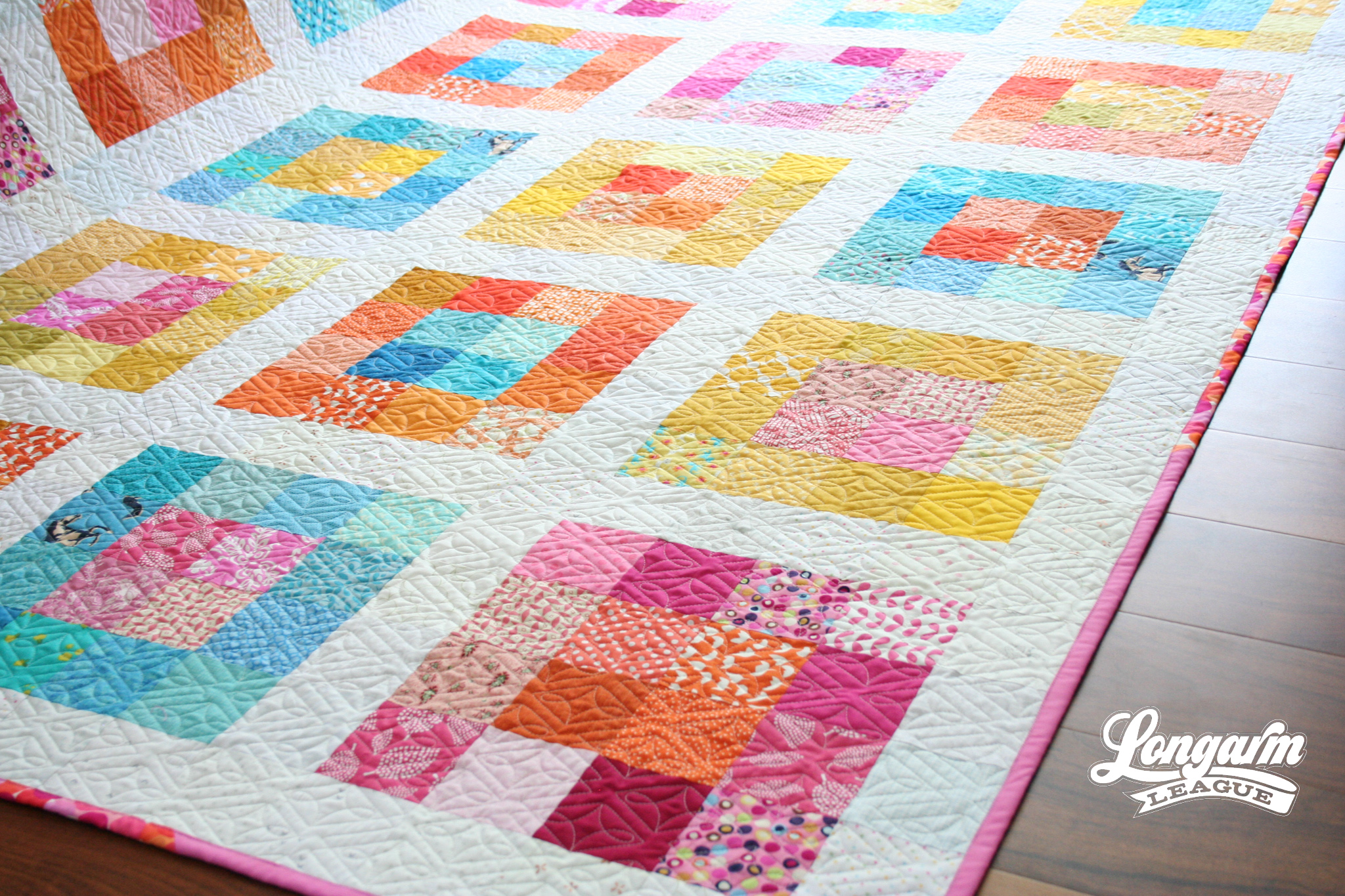
The Patchwork
For this project, I started with a palette in mind. I pulled scraps from bins of pink, orange, yellow, and blue. I decided to work with the teal-y blues although I did let some darker royal shades pass through my filter.
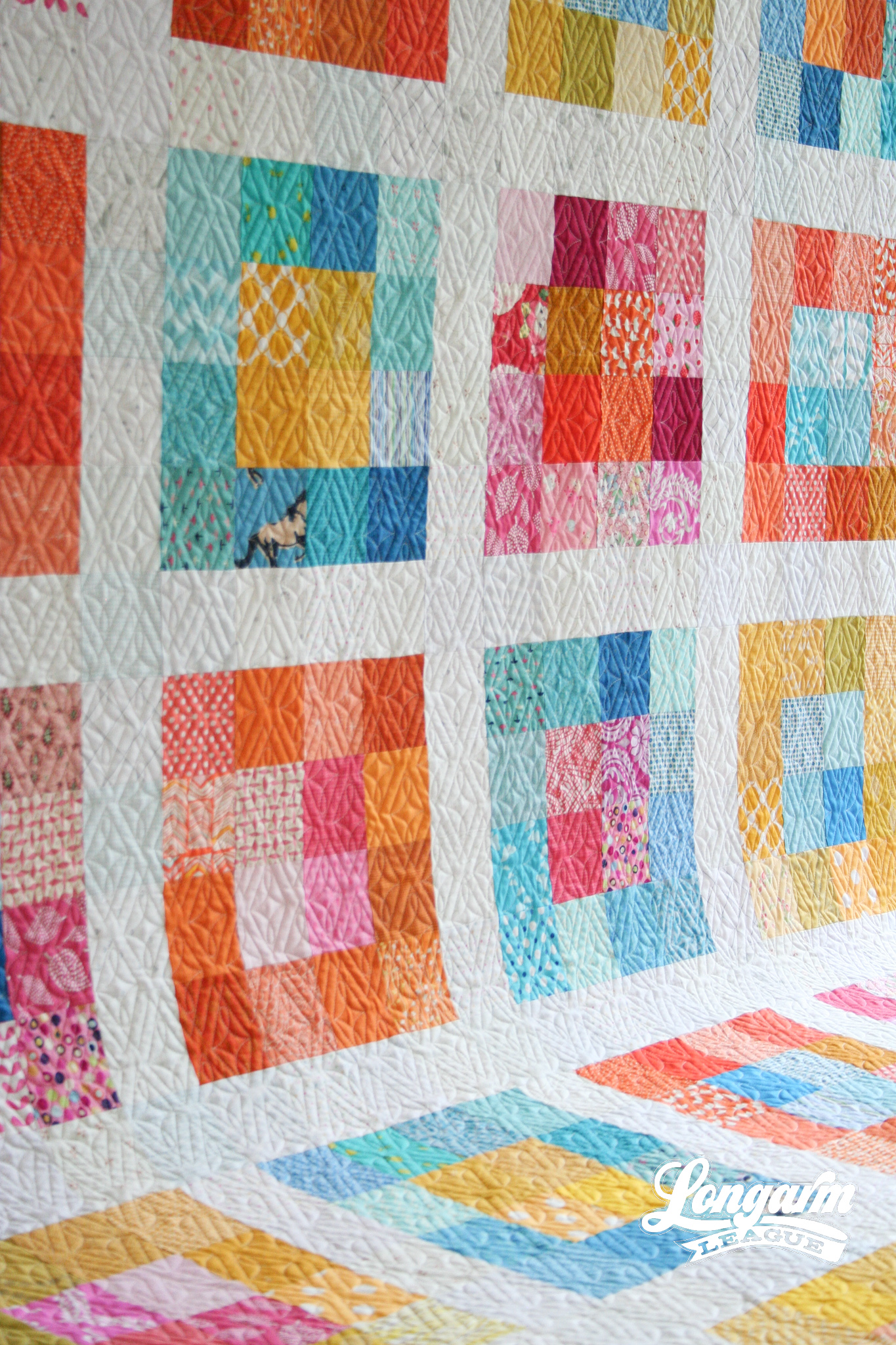
I originally planned to make a lot of ha...
Goth 2 Boss Digital E2E Quilting Design
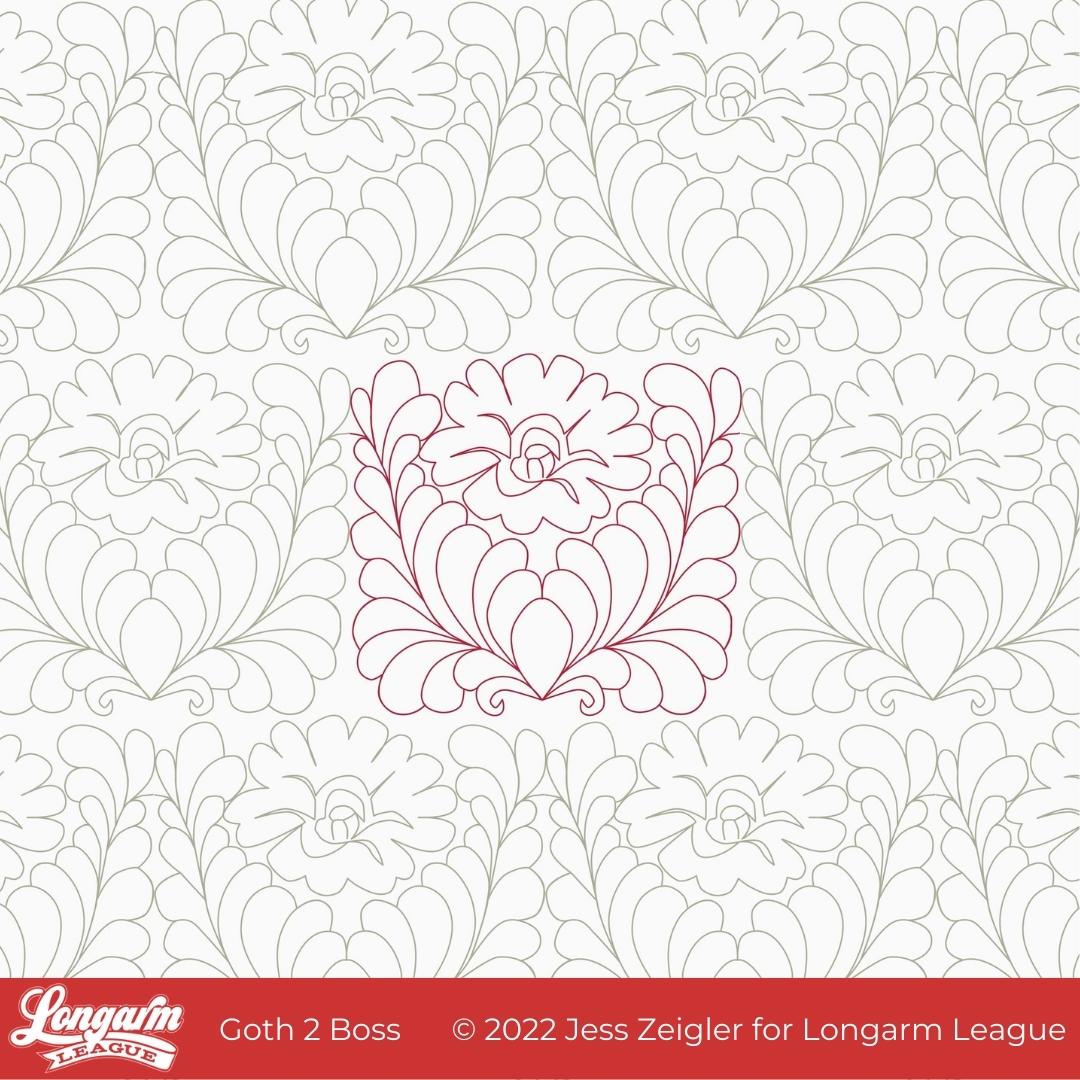
I feel like I owe you an explanation for the name of this design. That will be coming soon.
But first, I thought I'd tell you the inspiration behind it. Back in December of 2021, Josh and I were watching the series called Landscapers that had recently premiered on HBO. It is based on a crime set in the 1990s in England. The series is visually moody, drab, and dark. There's a scene in an upstairs bedroom that had deep red, ornate wallpaper and I found myself asking Josh to stop and go back to a frame that showcased the wallpaper better.
This is what caught my eye.
While it's definitely not the same, this was my first sketch from the inspirational wallpaper:

After playing around with the design a number of times on my reMarkable tablet, I slowly let the feathers get plumper and more prominent as part of the design, allowing me to fill in the space more evenly while keeping the floral center.
Here's how the design evolved as I was sketching:
When it comes to feathers,...
Top 20 Modern Edge to Edge Quilting Designs

Buying new digital pantograph designs is often as enticing as picking up a fat quarter—or ten!—at your local quilt shop. They can be oh-so-appealing, but which ones will you actually use the most in your business?
I can remember designs that I fell in love with and purchased on the spot, yet never actually used on a client’s quilt top. Conversely, there were several that I used over and over again, wringing every drop of value out of them. I developed my favorites based on ease of use and versatility. Of course, a longarm quilter's personal style and preferences can certainly play a part when making recommendations to clients, as well.
It’s been a while since I’ve quilted for others, so I thought it would be fun to ask other quilters what their current go-to pantographs are. I invited quilters from the Longarm League membership—along with other quilters who follow our social media accounts or subscribe to our email newsletter—to chime in with their current favorite edge-to-edge design...
Blackbird Digital Quilting Design
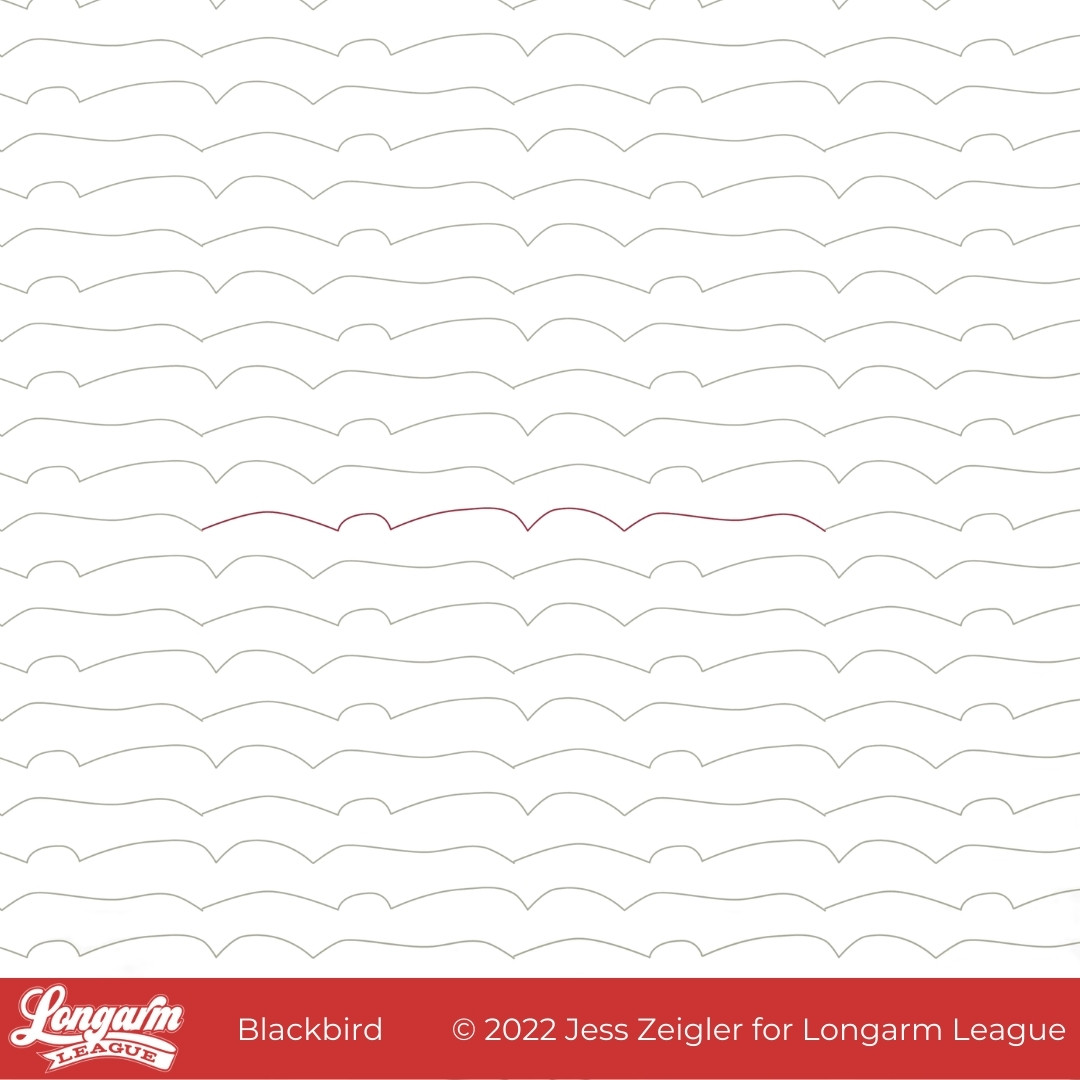
In our Longarm League private community, we have a forum where we can ask each other for pantograph suggestions for clients' quilts. Over and over again, I find myself recommending really simple designs like straight lines, Good Vibrations, Rumble, Wishbone, Soho, etc.
I wanted to make a REALLY simple design that also looked... organic. Blackbird is what resulted.
I simultaneously really like this one and am—what's the word, embarrassed?—by its simplicity.
Hey, they don't all have to be head-scratchers. You know, those designs that you have to stare at to find the repeat or are mesmerized by the complexity of the design. This one is pretty darn straightforward.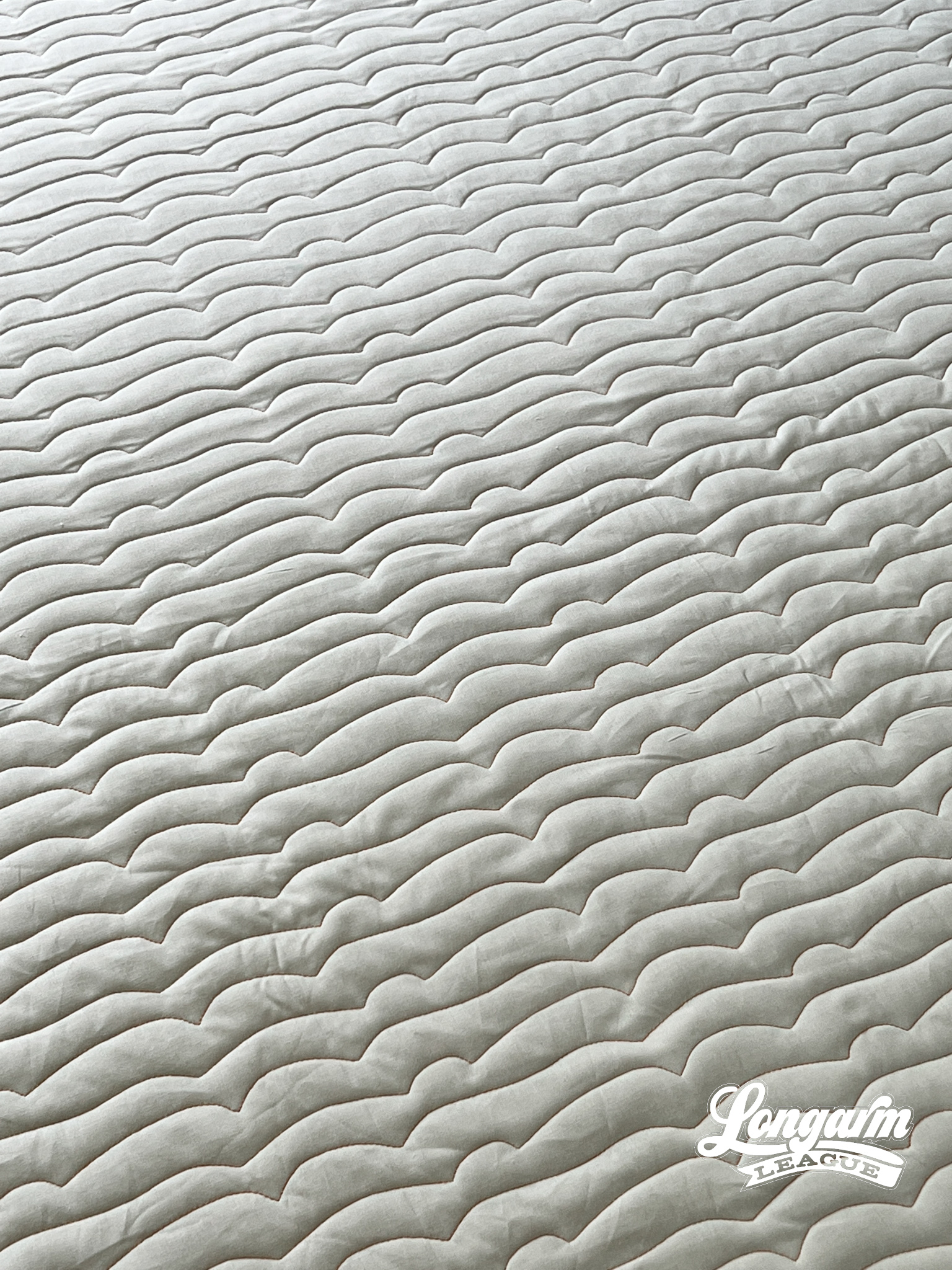
I'll give you four great reasons why we shouldn't shy away from offering simple designs to our clients:
1. FAST - I loaded up this up baby quilt and stitched it all out in an hour's time.
2. EFFICIENT - My machine uses the smaller L bobbins and this took less than one bobbin.
3. PROFITABLE - The faster and more...









